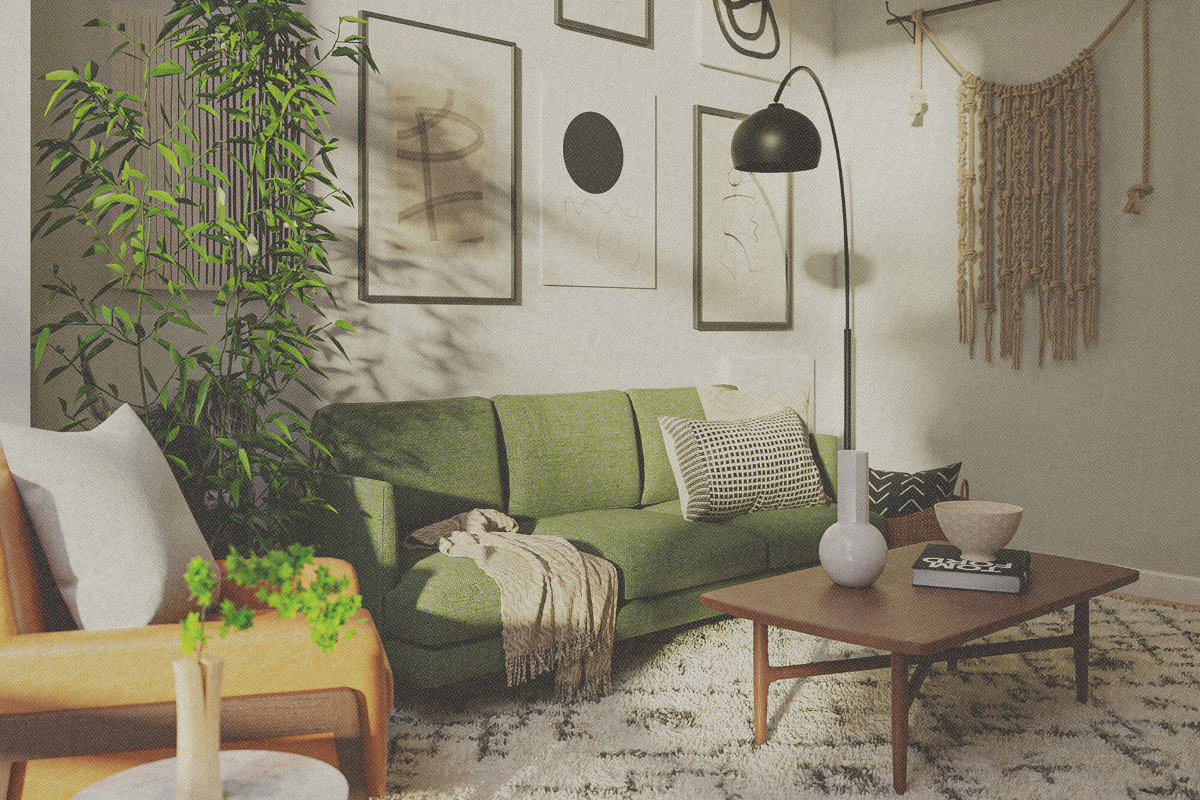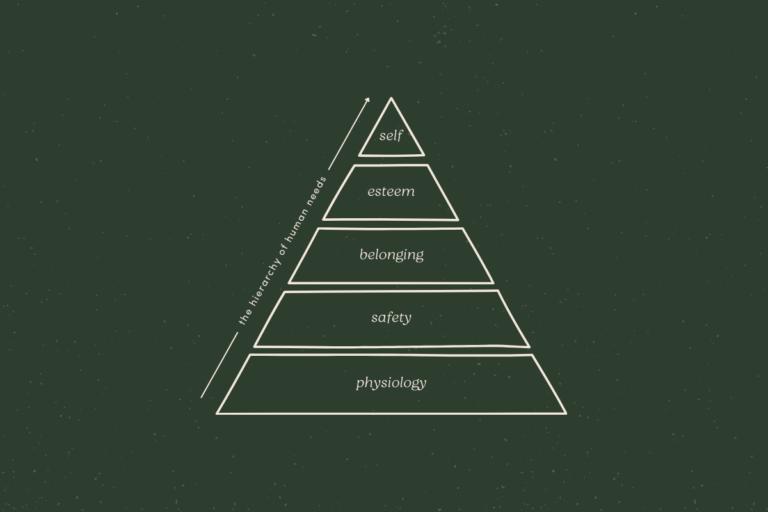
What makes a home? According to Google, there are a multitude of definitions for the concept of ‘home’. Some focus strictly on the home as “a physical structure within which one lives”, while others take a more symbolic approach. As I was doing some research for this article, two definitions captured my attention (The Free Dictionary):
¹ An environment offering security and happiness
² A valued place regarded as a refuge or place of origin.
These describe a home not only as a place, but as a blend of feelings. Feelings of security, happiness, refuge, and rootedness. In this guide, we’ll build off of these definitions and explore 5 ways in which we can cultivate a space that embodies precisely those feelings. So much of our life takes place at home – some might argue it is the most important place in the world. As such, making sure that it is as welcoming and soothing as it can be seems like a worthy pursuit.
Here are 5 ways to turn your home into your own personal sanctuary:
I. Invite the Elements
A concerning byproduct of our modern world and the rapid advancement of technology is that we have never been more far-removed from nature. Because we tend to spend a significant amount of time indoors, especially since the COVID-19 pandemic, some even believe we are starting to suffer from a nature deficit. We are genetically programmed to feel happier and calmer when we are surrounded by nature. After all, we are a part of it as much as it is a part of us. As such, a simple and effective way to create a home that feels grounding and nurturing is to bring in the elements that govern the natural world:
Earth

If you only do one thing from this entire guide, let it be this: add some greenery to your home. The benefits of having plants inside the home are endless: increased air quality, reduced stress levels, a boost in productivity and attention, and even easing symptoms of depression and anxiety. Some beautiful low-maintenance options are a Sansevieria (a.k.a. Snake Plant), Pilea, or Philodendron.
Another way to invite the element of earth into your home is to incorporate furniture and decor pieces that are made of natural materials. As Robin Wall-Kimmerer so perceptively put it in her book ‘Braiding Sweetgrass’, it’s hard to feel connected to the natural world when we’re surrounded by objects that are themselves so far removed from it:
“Looking over the objects on my desk – the basket, the candle, the paper – I delight in following their origins back to the ground. […] But I notice that my eyes and my thoughts pass quickly over the plastic on my desk. I hardly give the computer a second glance. I can muster no reflective moment for plastic. It is so far removed from the natural world. I wonder if that’s the place where the disconnection began, the loss of respect, when we could no longer easily see the life within the object.”
If you’re looking to make your space feel more warm and natural, fill it with items that show traces of life, such as wooden or rattan pieces (don’t be afraid to mix and match wood tones), ceramics and tile (such as terracotta or stone), glass, or even crystals. Opt for vintage, recycled, or organic pieces if you can, in order to respectfully and sustainably bring in nature and add extra character.
Water
Ahh, nothing feels quite as soothing as being surrounded by water. While we don’t all live close to a natural body of water (if only…), many of us do spend a lot of time in the bathroom. Why not make our bathing rituals even more restorative by intentionally turning this space into our own little private resort? Carefully select products that are nourishing and contain natural ingredients. For a real spa feel, opt for fragrances like eucalyptus, lavender, or tea tree. And don’t be afraid to add some greenery to your bathroom as well: a Philodendron, Pothos, Fern, Peace Lily, or some Bamboo will be perfectly content in the humidity of your bathroom.
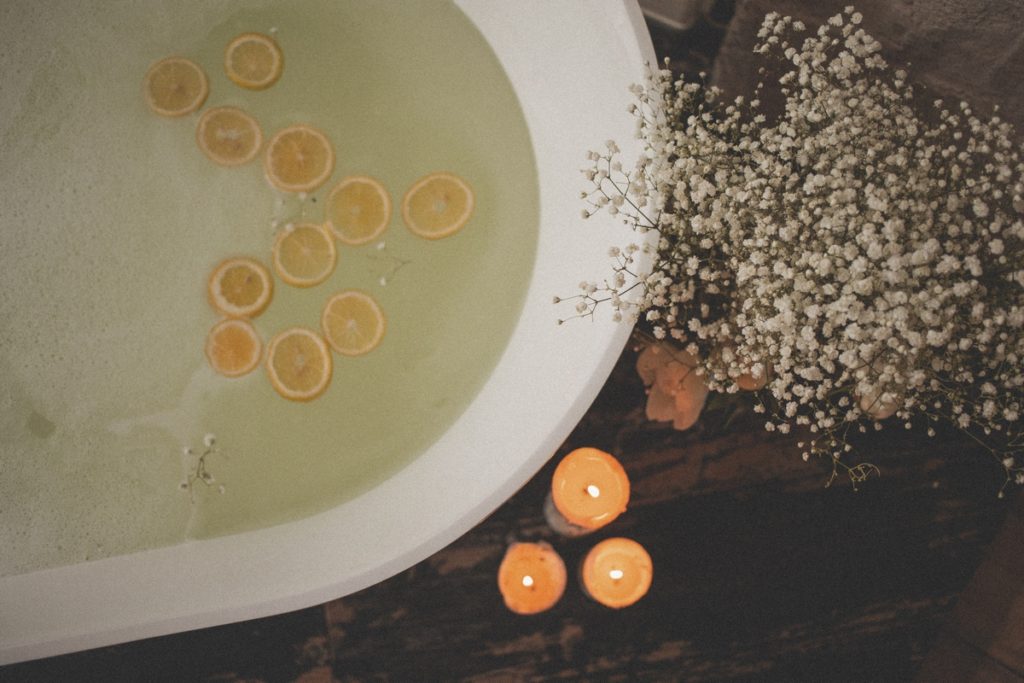
Another way to incorporate the idea of water into your home is through shape. In feng shui, the element of water is associated with wavy, curvy, undulating shapes. Adding objects with these shapes into your interior is a simple way to create an organic feel. At the moment, rugs and pillows with wavy patterns or curvy ceramic pieces are all the rage, and I’m not mad about it.
Fire
If there’s one thing that makes a home feel comfortable, safe, and welcoming, it’s heat. Warmth doesn’t just make us feel cozy, research shows it also makes us feel more connected to each other. In a psychological experiment, participants were asked to hold someone’s coffee, which was either hot or cold. It was found that people who had held the hot coffee judged the coffee owner as being more generous and caring, and even became more generous themselves. The researchers explain that this is because the same part of the brain is activated for physical warmth as for interpersonal warmth. In other words, physical warmth actually generates interpersonal warmth.
So how do we incorporate the element of fire into our homes? While we’re not all lucky enough to have a fireplace, there are many other simple ways to bring in this element. You could (carefully) light a few non-toxic beeswax candles, or burn some incense. If you prefer to burn herbs, make sure that you take the time to educate yourself first to ensure you are doing so respectfully and are not harming the earth or indigenous communities. The practices of burning Sage and Palo Santo, in particular, are best avoided.
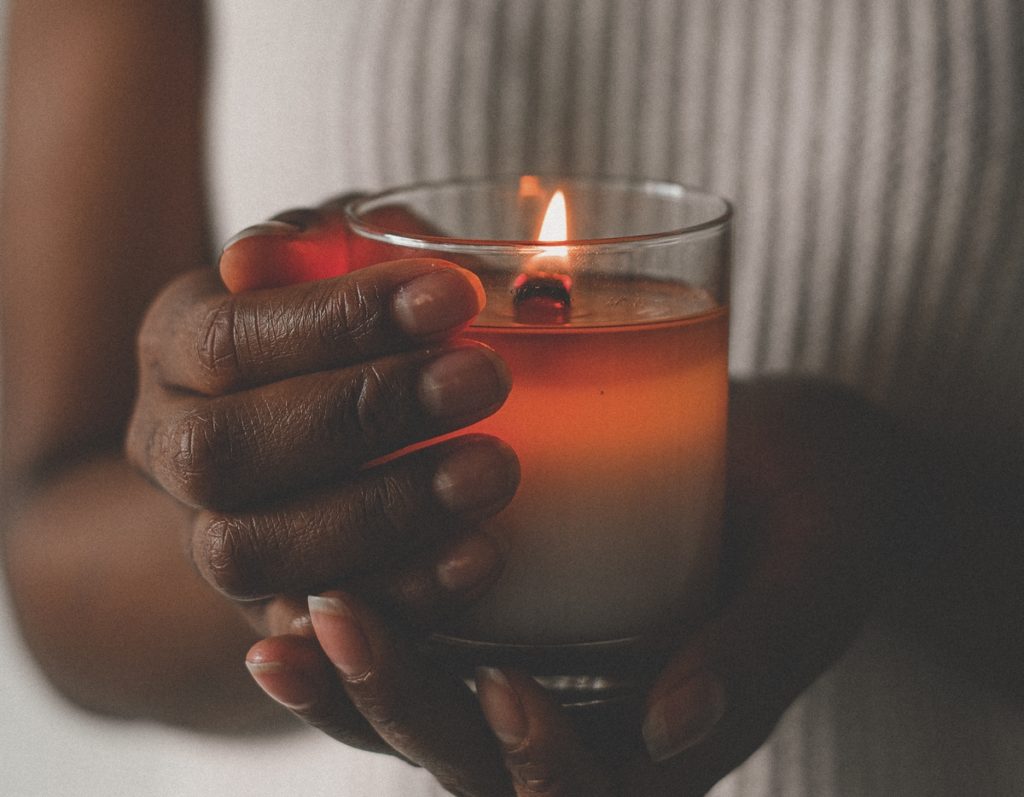
Air
Another way to make a home feel more natural is through the element of air. Of course, we can influence the actual quality of the air in our home by letting air flow through the windows regularly. Fresh air contains more oxygen, which makes you feel more awake and increases serotonin levels (i.e. your mood).
But there are also less literal ways of making our home feel more “airy”, such as incorporating light, neutral colors and using mirrors to create the illusion of more space. You might also want to reduce the amount of visual clutter in your space by organizing intelligently. It’s quite simple: if you want to make your home feel open and airy, you’ve got to let it breathe.
II. Promote Well-Being
In early prehistoric times, humans made use of the natural environment to find shelter, hiding in trees or caves or building shelter using stones and branches. Homes were crucial to provide shelter from the weather and safety from other animals. It is also where humans came to rest and recuperate. While modern daily life has become a lot less perilous, we still experience a plethora of stressors. Rather than being stalked by a sabertooth tiger, we face looming deadlines. Instead of worrying about finding enough berries, we continuously feel the pressure to do more, be more, and have more. So, while the stressors have changed significantly, our home still serves the same function it always has: to be a safe space for us.
Here are three ideas that can help us organize our space so that it can best fulfill this duty:
Create designated slow spaces
We want to set up our home in a way that promotes well-being, rather than stress. Try to create designated areas in your home that invite you to slow down and take care of yourself. Let’s call them ‘slow spaces’. They can be big or small: a reading nook, a little bench on your balcony, a herbal tea station on your counter, a meditation pillow… When your space supports behavior that is beneficial to you, it will be much easier for you to engage in those habits on a regular basis.
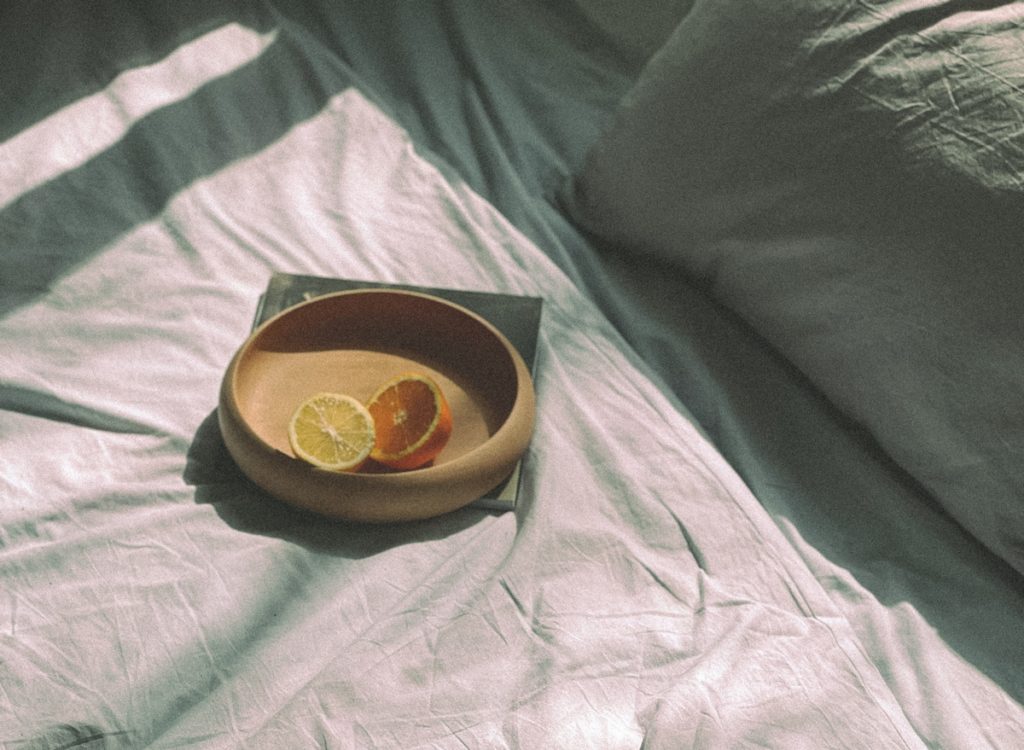
Remove friction
In order to make our home as much of a stress-free zone as possible, it can be very helpful to pay attention to the little things that might be causing tension there. You know… that drawer that always gets stuck, that light bulb that is far too bright, or that closet organization that just isn’t working… When we actually take the time to fix these seemingly small issues, we can greatly improve the overall flow of our home.
Take care of your space
In order to cultivate a space that cares for us, we also need to take care of it. As you’ve probably noticed, our spaces tend to reflect our inner state – a cluttered brain often leads to a cluttered home. But this connection works both ways. When we make sure our space is clean and orderly, it makes us feel calmer internally as well. While it is completely normal for our homes to get messy sometimes, we can avoid overwhelm by getting into the habit of cleaning up after ourselves regularly. Try to approach this as a mindful practice, rather than a chore. And to be extra caring, aim to avoid harsh chemicals and opt for cleaning products that are gentle for both us and the planet.
III. Stimulate the Senses
We humans experience life through five senses: sight, touch, smell, hearing, and taste. Each of these senses can support and contribute to the way a space feels. Put them all together, and you can truly curate the energy of your home. So how can we use all five senses to make our home feel like a sanctuary?
Sight
Perhaps the most obvious sense we can influence through our home is sight. The first thing we notice when we walk into a home is the way it looks. We’ve already discussed the impact of keeping our space open and tidy. Here are a few other strategies to make a space even more visually appealing.
-
- No matter what your preferences are in terms of interior design, the right design should be soothing for the eyes. That means it is consistent and harmonious. We can achieve this by creating repetition in the materials, shapes, and colors we use. When certain elements echo throughout our home, it creates a peaceful rhythm and flow, without anything feeling jarring or out of place.
- When it comes to decorating surfaces such as shelves or coffee tables, try to follow the Rule of Three. Our eyes and brain perceive an odd number of things as more interesting, attractive, and natural. Try grouping your items in groups of three and you’ll probably notice a difference right away.
- Pay attention to lighting. Try to maximize the amount of natural light in your home by making sure windows are not obstructed and placing seating and working areas near them. In terms of artificial lighting, warm, yellow light is a more soothing option than cool, blue-ish light. For extra coziness, add some orange or pink light sources as well, through lamp shades, candles, or himalayan salt lamps.
- Integrate art pieces into your interior that complement or reinforce your other style choices. Art doesn’t have to mean fancy paintings or prints – you can artfully display any object you own that you find beautiful, such as books, candles, records, tableware, or even clothing items.
Touch
We all like to be comfy in our homes, and being comfy often involves touching soft things. A simple way to make our home feel cozy and inviting is to embrace a large variation of textures:
-
- Use rugs to add visual interest and comfort to your floors, and don’t be afraid to layer them. For instance, you could create some contrast by layering a thick fuzzy rug over a thin jute base.
- Make your couches, beds, and benches extra cozy by adding throw pillows and draping blankets over them.
- Spruce up your seating area by adding floor pillows or poufs.
- Frame your windows and sliding doors with curtains (even if they are just decorative). I love some light linen curtains to make a room feel light and breezy. You could even add curtains to your doorways, for a really serene Japanese look.
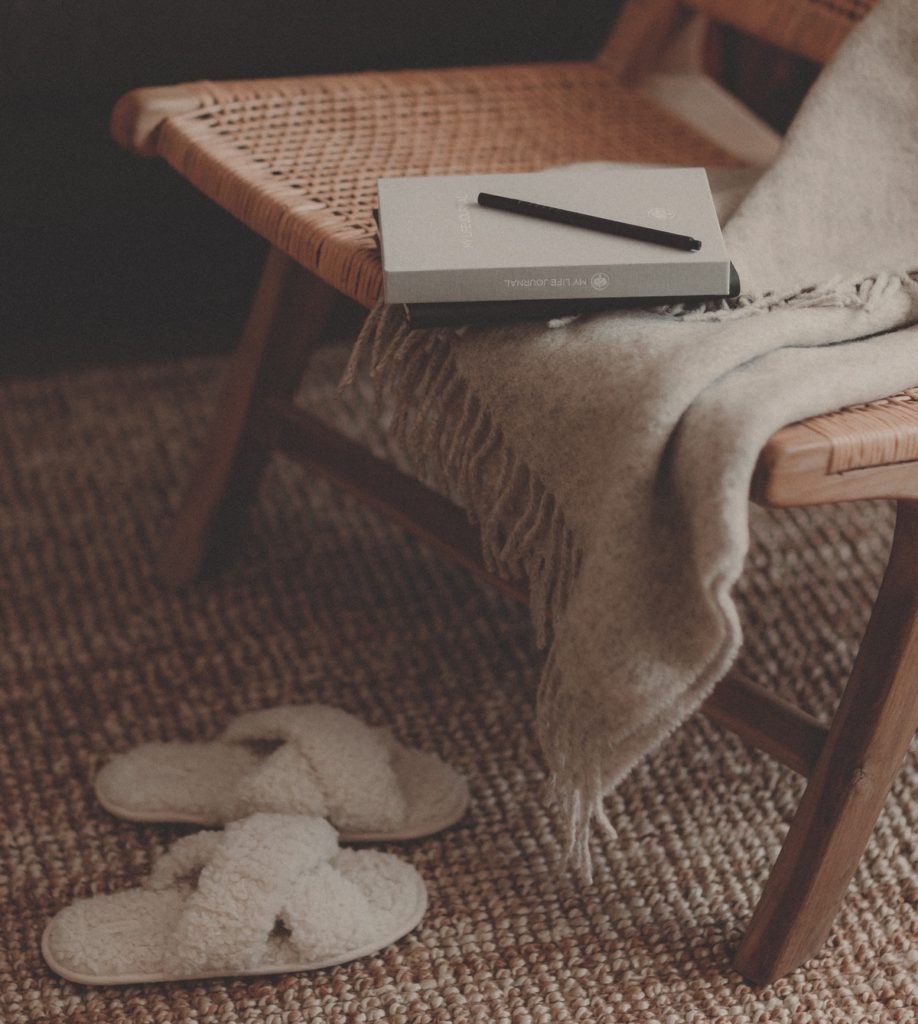
Smell
Our sense of smell is our strongest sense. It can transport us to a different place and trigger powerful memories. In fact, research has found that it is the only sense that has a direct connection to the amygdala and hippocampus in our brains, areas which play a role in processing emotions and forming memories. As such, we have a great opportunity to influence the ambience of our home through smell.
We can bring virtually any scent we like into our homes through scented candles, incense, or essential oils. Whatever your preference, do make sure the products you use are safe and non-toxic.
Another lovely natural way to scent a space is to make a simmer pot (or potpourri). Simply add a mixture of ingredients, such as left-over citrus peels, herbs, and spices, and simmer them on the stove top to fill your space with a warm and inviting aroma. You can keep your concoction simmering for up to 2-3 days, as long as you keep refilling the water every few hours as needed.
Hearing
If there’s anything that can instantly set the mood, it’s music. I recommend creating your own go-to playlist for winding down at home, filled with the kind of music you enjoy most. If you happen to have an old-school sound system or record player, why not create a cute, designated music station? This is a lovely way to turn listening to music into a more intentional, mindful ritual.
Besides music, there are many other soothing sounds that can help make a space feel inviting. The crackle of a fireplace (real or in video format), the sound of birds outside, wind chimes, the gentle bubbling of a diffuser… Figure out what you find comforting, and find creative ways to bring it into your home.
Taste
Home is where we come to replenish and nourish our bodies. As such, a truly nurturing space should also support and elevate the experience of preparing and enjoying food. Here are a few tips to consider:
-
- In order to improve both the result and the experience of cooking, don’t underestimate the impact of investing in proper tools. High-quality tools (e.g. knives, pans, appliances) really do make cooking much easier and more enjoyable. Be intentional with this: you don’t need the best of everything. Reflect on the way you cook most often, and what tools would make that process go more smoothly.
- Building up a nice collection of herbs and spices is going to open up a world of possibilities in terms of flavors and recipes. Again, you can determine what your collection needs based on how you like to cook and what flavor profiles you prefer.
- Make it a point to carefully display your fresh fruit and herbs in your kitchen or dining room. Not only will it remind you to use them, but I find it also inspires healthier choices.
- Beautiful tableware can really elevate the look and feel of your meals. Finding beautiful pieces for your table doesn’t have to be difficult or expensive – vintage stores often have plenty of tableware to choose from. Over time, you can build a unique collection you love.
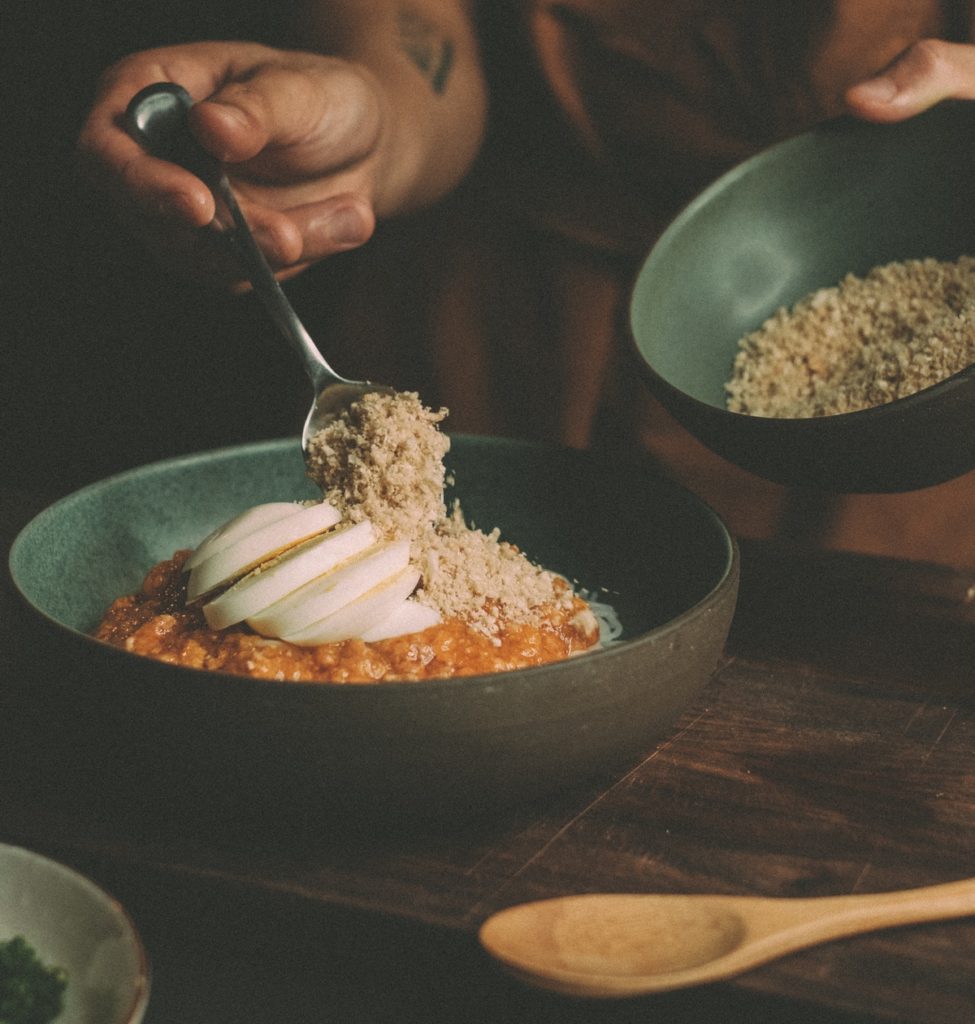
IV. Foster Connection
Our homes are not only places of shelter and rest, they are also where we gather with the people who are important to us. Therefore, I’d argue that a home that feels like a sanctuary should facilitate gathering and cultivate a sense of community. You know how some spaces are just always the go-to spot for gatherings? Those places where people seem to feel instantly at home, and linger long after the meal is over? In order to turn your home into one of those spaces, you might want to consider the following elements:
-
- Create a relaxed environment. People gravitate towards spaces where they feel comfortable. If your house feels rigid (e.g. it’s ‘too perfect’, filled with fragile objects, there are a million house rules, etc.), people aren’t likely to make themselves at home there. When your home feels like it’s lived in and well-loved, people will relax into the environment and feel like they are a part of the space.
- Make sure that you have an inviting seating area (or multiple) with lots of comfy options where people can chat, snack, or play. Try to create some variation in the seating type and height, as different people like to hang in different ways. Some folks love to be on high stools where they can be part of everyone’s conversation, others like to discreetly curl up on the sofa, and some might prefer a humble pillow on the floor. Low seating options especially tend to make a space feel much more casual and approachable.
- Intentionally set up your seating area in such a way that people can face each other, instead of everyone facing the TV or a blank wall. You don’t have to reorganize your entire living room – small seating options such as poufs or floor pillows can easily be moved around when you’re expecting company.
- Add some personality. People love to see parts of you in your space. Don’t be afraid to display the things that are authentically you, such as books, artwork, pictures, or other meaningful items. We will dive further into this in the next section.
- Stock up on snacks and drinks. Unsurprisingly, people are attracted to spaces where they are well taken care of. Nothing feels quite as inviting as having a variety of beverages and snacks at your disposal. I’m a tea fanatic, so I pride myself on always having a big selection of herbal tea available for guests to choose from. It has become a fun little ritual that guests always seem to look forward to when coming over.
V. Reflect Your Identity
One of the two definitions stated at the beginning of this article described the home as not just a place of shelter, but a “place of origin”. Whether we still live in our childhood home or have moved all over the world, the concept of home always remains intimately tied to our roots and identity. It is no surprise, then, that we have a tendency to adorn our dwellings with pictures and memorabilia that remind us of who we are and where we come from.
In order to make your home feel like your personal oasis, it should reflect you as a person. The easiest way to do that is to fill it up with things that are meaningful to you. These could be objects that are tied to memories or travels, artwork from an artist you love, family heirlooms, or simply pieces that inspire you and remind you of who you want to be. As always, be intentional about the objects you display. When your surroundings get cluttered, it can start to feel oppressive and crammed, which is not the vibe we are looking for.
Another way to make your home feel more personal and authentic is to incorporate unique pieces that you can’t easily find anywhere else. Those could be thrifted, antique, or small business finds, DIY pieces of furniture or decor, or even works of art that were created by you or a loved one. When the pieces in our home each have their own unique stories, it adds a new layer of depth and meaning. The magic happens when we are able to let go of trends and infuse our home with more of what matters to us.
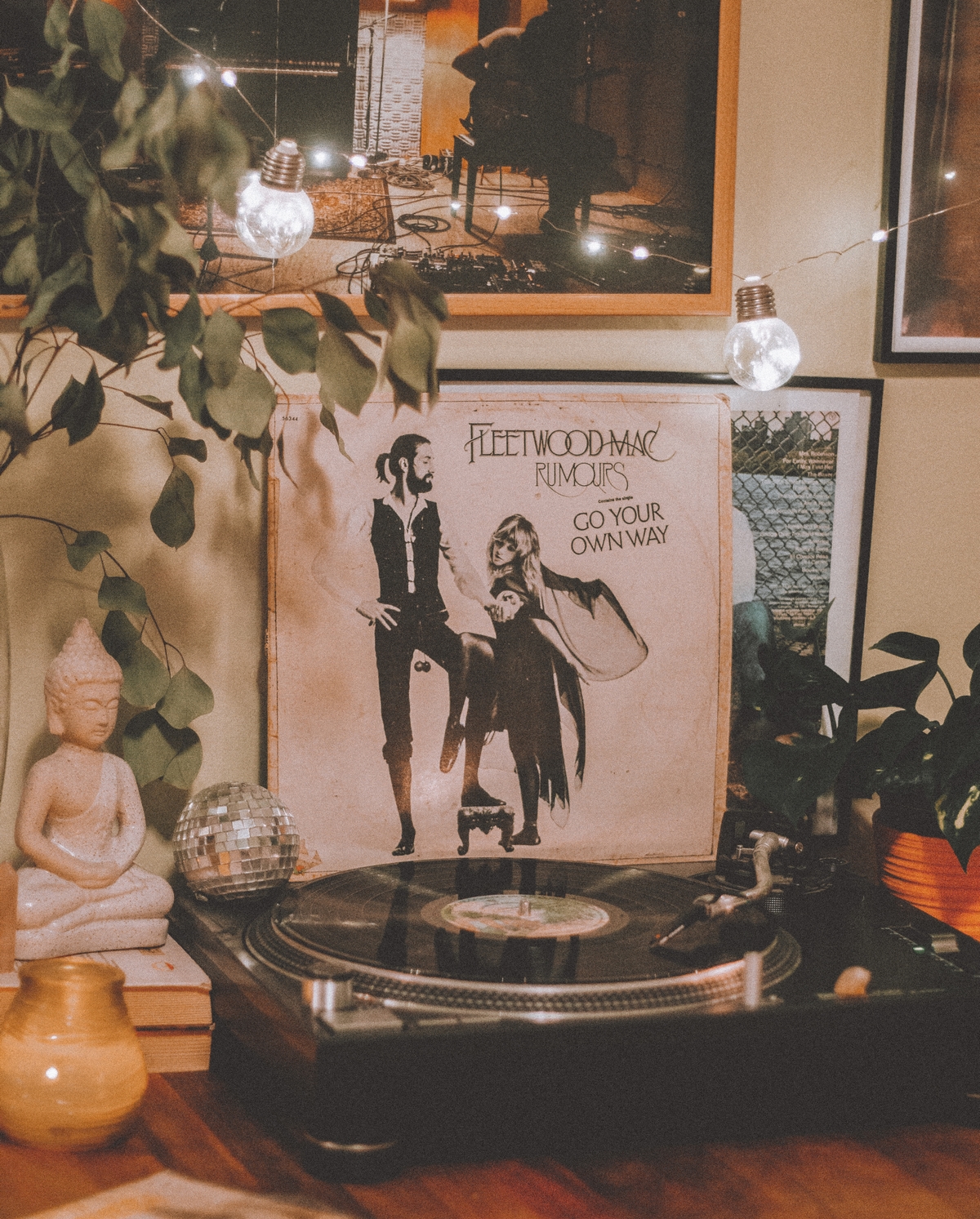
A Final Note
Throughout this article we explored 5 ways to turn your home into a sanctuary. We discussed:
I. Inviting the elements to create a home that feels more natural and grounding
II. Cultivating a space that promotes well-being by creating slow spaces, reducing friction, and taking care of your home.
III. Igniting all five senses to create harmony and curate the energy of your home.
IV. Fostering connection by creating a space that facilitates gathering.
V. Reflecting your roots and identity through the items you showcase.
As a final note, I would like to emphasize that your home does not need to be perfect or ‘finished’ by any means for it to be a grounding, sacred space. Our homes are eternal works in progress, continuously evolving just like us.
A lot of joy and peace can be found in the little things in our homes: the way our favorite blanket feels, the way the morning light seeps through a bedroom window, or the quiet enjoyment of a cup of tea… Perhaps the secret to a home that feels sacred lies not in the home itself, but in the mindfulness with which we occupy it.
